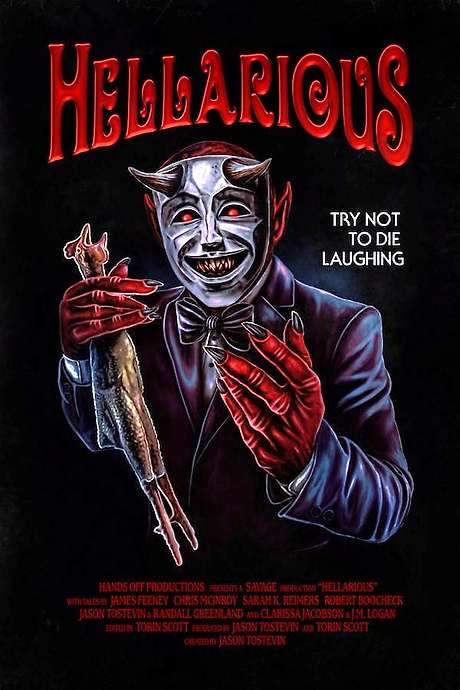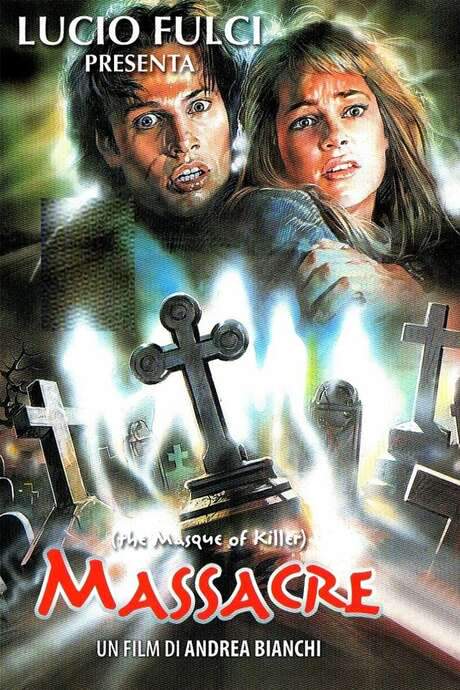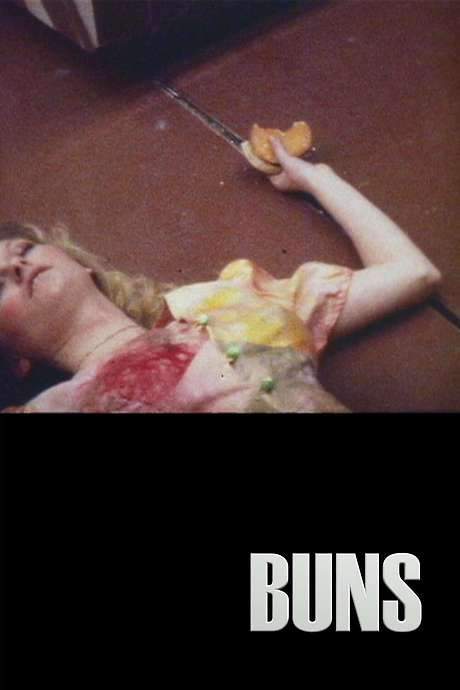
Microwave Massacre
Year: 1979
Runtime: 76 mins
Language: English
Donald, a weary construction worker, struggles with his wife's insistence on cooking only gourmet meals, leaving him with barely edible food. After a heated argument ends in tragedy, he discovers an unconventional use for his microwave. He begins preparing richer dishes, experimenting with a variety of recipes and meats, turning the appliance into a macabre source of sustenance.
Warning: spoilers below!
Haven’t seen Microwave Massacre yet? This summary contains major spoilers. Bookmark the page, watch the movie, and come back for the full breakdown. If you're ready, scroll on and relive the story!
Microwave Massacre (1979) – Full Plot Summary & Ending Explained
Read the complete plot breakdown of Microwave Massacre (1979), including all key story events, major twists, and the ending explained in detail. Discover what really happened—and what it all means.
Donald [Jackie Vernon] is an overweight, middle-aged construction worker whose home life has been strained by his wife May [Claire Ginsberg] turning their meals into haute cuisine in a well-meaning but misguided effort to project an air of class. The couple’s lunch routine is a far cry from the simple bologna-and-cheese sandwiches enjoyed by their friend circle, with May’s latest kitchen gambit—a hulking Major Electric microwave—promising speed and sophistication but delivering chaos instead of elegance. What follows is a slow unravelling of appetite, pride, and a marriage that cannot survive the culinary theatre May_upholds.
One stormy night, after returning home drunk and locking horns with May, Donald’s temper snaps. In a brutal, impulsive moment, he strikes May down with a large salt shaker, ending her life. The next morning, a brutal hangover fog sits over him as he staggers through the apartment, with no memory of the night before and a growing, gnawing hunger. When he discovers May’s body inside the microwave, a mix of horror, relief, and bizarre rationalization washes over him. He tells his coworkers that he and May have separated, a convenient excuse that lets him keep his routine intact as if nothing had happened.
After work, Donald begins to deal with the aftermath in a methodical, almost clinical way. He dismembers May’s body and stores the parts in the refrigerator wrapped in foil, a grisly secret hidden away from the world. A disturbing running gag emerges: May’s severed head retains an eerie hint of sentience, poking through the haze of the situation and giving the audience a macabre wink as the meal preparation continues. The kitchen becomes a workshop, and the microwave a tyrant that makes it all seem possible.
In a moment that underscores the film’s dark wit, Donald ventures into the night for a midnight snack and accidentally tastes May’s hand. Rather than recoiling, he finds it strangely delicious and, in a surprising turn, shares a few bites with Phillip and Roosevelt. The response from his friends—initial horror followed by reluctant, even approving fascination—cements the idea that the line between culinary genius and monstrous appetite is thinner than anyone wants to admit. Before long, Donald’s culinary experiments take a more disturbing turn: he begins to recruit occasional partners, bringing home hookers to turn them into meat for his recipes.
A medical scare interrupts the carnivorous fervor. While cooking one night, Donald suffers a mild heart attack and visits his doctor. The physician explains that a pacemaker was implanted years earlier when Donald carried extra weight, but reassures him that he is otherwise in reasonable health. The visit adds a grim layer of irony to the tale: a body altered by fear, appetite, and denial seems to edge closer to its limits as the kitchen remains a place of danger and temptation.
May’s equally shrewish sister Evelyn arrives, having not heard from May in some time. She wants to see her sister but is met with a horrifying discovery: May’s severed head sits in May’s bed, an unsettling reminder of what has transpired. Evelyn is gagged with bread and tied up in Donald’s closet, a tense moment that heightens the sense that danger has spilled beyond the confines of the kitchen.
Donald’s lunch business continues to thrive, with friends eagerly anticipating new dishes. He even hatches a plan to cater a night out at a wrestling match, presenting a new creation he calls “Peking chick.” When Roosevelt and Phillip come to collect Donald, they find him collapsed on the kitchen floor, the room crowded with the scent of failed experiments and partially cooked body parts cooling in the microwave. The dream of culinary mastery has turned into a grim tableau, and the pair escape in silent disbelief.
The finale shifts from the kitchen to the house itself. A repairman—played by Wayne Berwick in a brief uncredited cameo—inspects the faulty microwave and notes that the wiring could be dangerous for someone with a pacemaker. As the repairman’s observations linger, the camera lingers on the refrigerator door. When it opens, May’s head stares back, her eyes glowing with an eerie orange light, and the film ends on this chilling, almost operatic close.
This tale unfolds with a blunt, darkly comic lens: a man’s attempt to fix a failing life through increasingly extreme meals reveals a rotted domestic structure and a moral line that becomes almost impossible to draw. The performances, anchored by the grimly human arc of Donald, pull the audience into a world where appetite and violence blur into a single, frightening appetite for control and belonging. The film’s final image—a quiet, clinical ending that gives way to a haunting, almost supernatural reveal—lingers in the mind, leaving a question about the true cost of transforming life into a perpetual feast.
Last Updated: October 05, 2025 at 12:25
Unlock the Full Story of Microwave Massacre
Don't stop at just watching — explore Microwave Massacre in full detail. From the complete plot summary and scene-by-scene timeline to character breakdowns, thematic analysis, and a deep dive into the ending — every page helps you truly understand what Microwave Massacre is all about. Plus, discover what's next after the movie.
Microwave Massacre Timeline
Track the full timeline of Microwave Massacre with every major event arranged chronologically. Perfect for decoding non-linear storytelling, flashbacks, or parallel narratives with a clear scene-by-scene breakdown.

Similar Movies to Microwave Massacre
Discover movies like Microwave Massacre that share similar genres, themes, and storytelling elements. Whether you’re drawn to the atmosphere, character arcs, or plot structure, these curated recommendations will help you explore more films you’ll love.
Explore More About Movie Microwave Massacre
Microwave Massacre (1979) Scene-by-Scene Movie Timeline
Microwave Massacre (1979) Movie Characters, Themes & Settings
Microwave Massacre (1979) Spoiler-Free Summary & Key Flow
Movies Like Microwave Massacre – Similar Titles You’ll Enjoy
Hellarious (2019) Story Summary & Characters
Yummy (2019) Movie Recap & Themes
The Jackhammer Massacre (2004) Ending Explained & Film Insights
Weenie Roast Massacre (2007) Movie Recap & Themes
Motor Home Massacre (2005) Full Summary & Key Details
The German Chainsaw Massacre (1990) Complete Plot Breakdown
The Nail Gun Massacre (1985) Film Overview & Timeline
Psychos in Love (1987) Full Summary & Key Details
Blood Diner (1987) Plot Summary & Ending Explained
Massacre (1989) Complete Plot Breakdown
The Undertaker and His Pals (1966) Complete Plot Breakdown
Buns (1978) Ending Explained & Film Insights
Head of the Family (1996) Movie Recap & Themes
Brutal Massacre: A Comedy (2008) Spoiler-Packed Plot Recap
Cannibal Girls (1973) Spoiler-Packed Plot Recap

















